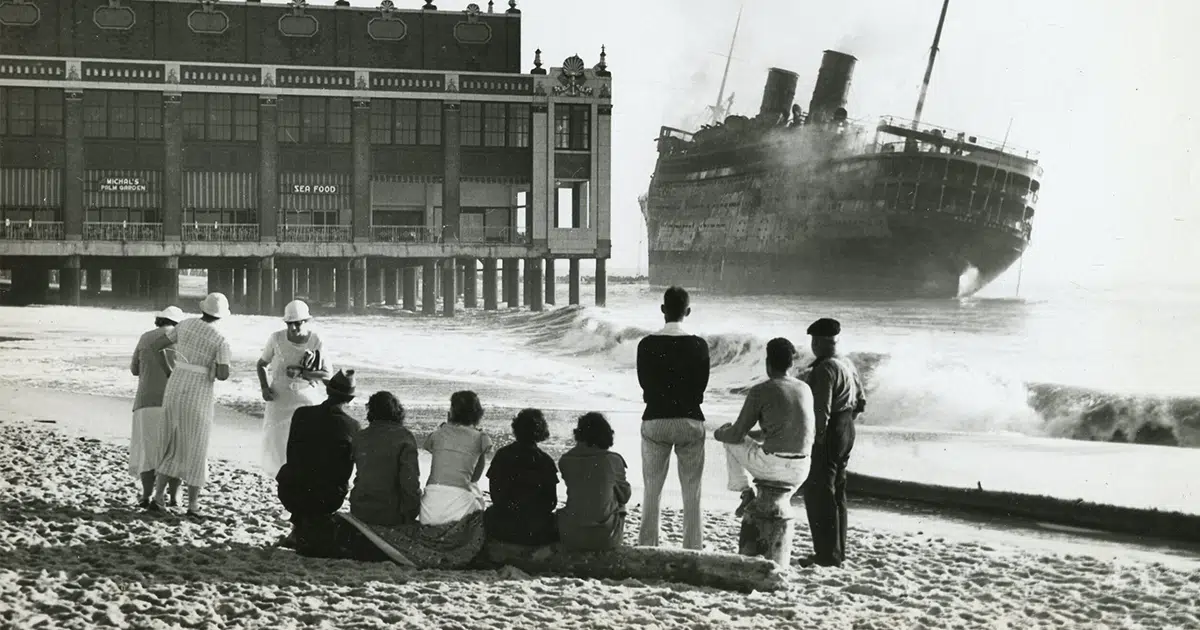
The Mystery Of SS Morro Castle, Shipwrecked On The Jersey Shore
Featured in Ripley's Believe It or Not!

Like the bones of a long-dead titan, the remains of the SS Morro Castle sat still, beached on the shore in the shadow of the Asbury Park boardwalk. Despite the fact that a minimum of 137 passengers and crewmen lie dead in the wake of a tragic fire (plus potentially dozens of unaccounted for stowaways—more on that later), souvenirs and photo-ops caused a boom for this Jersey Shore community. For half a year from the fall of 1934 to the early spring of 1935, tourists flocked from hundreds of miles hoping to capture a glimpse of the moored leviathan in the aftermath of its tragic blaze, which lay close enough to land to wade out and be touched.















